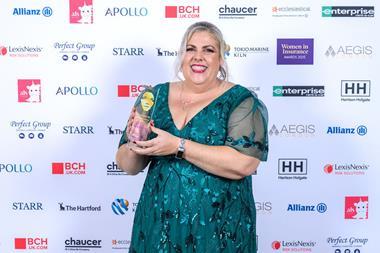Partners& chairman Stuart Reid responds for a second time, highlighting the impact of consolidation and how they can offer clients something better
Partners& chief executive Phil Barton and chairman Stuart Reid have responded strongly on the big consolidation debate.
Reid and Barton started a debate on broker consolidation by highlighting its negative impacts on clients and stressing their new firm can fill the gap for customers.
Brokerbility chairman Ashwin Mistry responded, pointing out that both Reid and Barton have benefited from selling their businesses for high valuations.
Meanwhile, GRP’s new chief executive Mike Bruce says there is quite a bit of ‘bravado’ on multiples in prices and he doubts whether they have increased that much in recent years.
But Reid and Barton, in a joint post for Insurance Times, today swung a counter punch back into the debate.
They say: ”There has been much written about our recent commentary on perceived untenable changes in broker consolidation in the UK.
”Whilst most of the alternative views expressed have come from either consolidators or from vendors, for whom our point is not palatable, we try here to make our views clear.
”Importantly, in our view, consolidation is not universally good or bad. Consolidation in its first 12 years from 2000 was a force for good.
”It balanced the relationship between insurer and broker and professionalised firms, delivering better outcomes for clients and employees.
Prices up on chase for scale
Reid and Barton stress it is ‘indisputable’ that prices have risen in the last few years.
”But since 2014, prices have escalated despite what some might say.
”It is indisputable that multiples for larger brokers have spiralled considerably above the long-term average, driven by a chase for scale rather than building an enhanced client proposition.
”These prices have led to a demonstrable change in our market, with clients and colleagues forgotten in the rush.
”So, in this new world, higher prices have led naturally to the acquirer looking for more synergies.
”Examples include regular increases in admin fees, harvesting excessive profits from premium finance, and tighter placement strategies forcing insurers to pay ever higher commissions, whilst at the same time demanding capacity from insurers, even for standard covers, and in some cases developing a “fee for services” model hitherto embedded in the relationship.”
Clients losing out
Pointing to the negative impact on clients, Reid added: ”Often, this dynamic has led to a marked reduction in service to clients as they are moved to remote call centres, served by fewer staff, and offered a commoditised one-size-fits-all policy.
”These activities are not established for the benefit of clients. Which client would willingly choose to see their costs go up and their service diminish?
”And what about the advisory team? How many in the industry chose to work for their current employer?
”How valued are they by that employer? And how are they recognised? Is their work environment better, do they have a voice, do they influence events, are they still actually broking?
”What we are doing at Partners& is trying to buck that trend. We are selectively acquiring to get to the scale and reach needed to enable us to give clients the offering that is best suited to them.
”Our aim is to be the best advisory business, rather than the biggest… we understand that to achieve that goal we need to attract the right talent; a team that genuinely strives to understand each client’s wider needs, and one which is committed to providing solutions and service to support them.
”Our golden thread is that of partnership… a lasting relationship (whether with clients, colleagues, or insurer partners) for the purpose of delivering upon a common goal for mutual benefit.
“It is a traditional approach with a modern twist, and it used to be the way that most brokers worked…sadly, this no longer always the case.”
Hosted by comedian and actor Tom Allen, 34 Gold, 23 Silver and 22 Bronze awards were handed out across an amazing 34 categories recognising brilliance and innovation right across the breadth of UK general insurance.





















































No comments yet